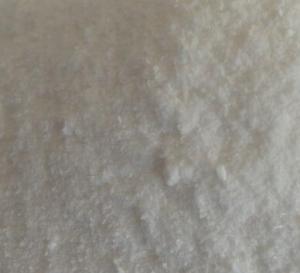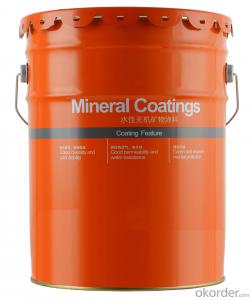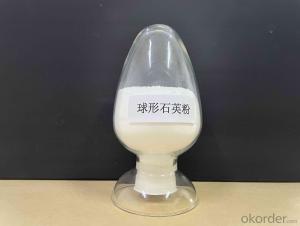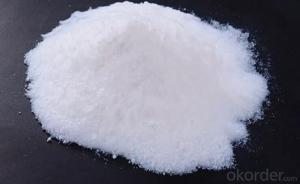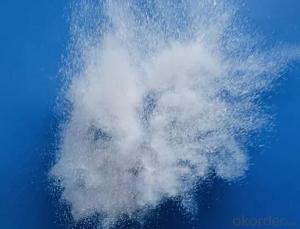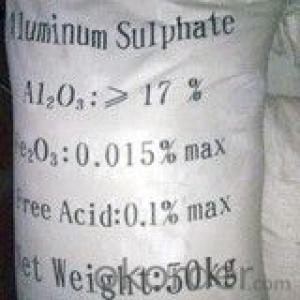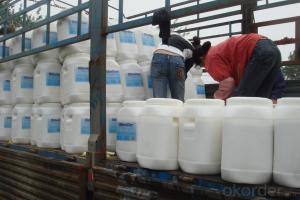PVC Stabalizer for Plastic Products,Profiles,Pipes,Tubes
- Loading Port:
- Qingdao
- Payment Terms:
- TT or LC
- Min Order Qty:
- 2000 kg
- Supply Capability:
- 100000 kg/month
OKorder Service Pledge
OKorder Financial Service
You Might Also Like
1. Structure of Pvc Impact Modifier Description
Classification:Chemical Auxiliary Agent
CAS No.:63231-66-3
Other Names:chlorinated polyethylene
Appearance:White Powder
Chlorine Content:35%
Volatiles Content:0.3%
Tearing Strength:8.0Mpa
Elogation at Break:800%
2. Main Features of the Calcium Pvc Compound Stabilizer/Specification
Item | Unit | Index | |
Chlorine content | % | 35±1 | |
Thermal decomposition temperature | ≥ 165 | ||
Volatile Matter content | % | ≤0.3 | |
Remains crystallinity | % | ≤ 5 | |
Tearing Strength | Mpa | ≥8.0 | |
Rate of filtration | 36mesh | % | ≥99 |
Shore Hardness A | ° | ≤57 | |
Apparent Density | g/ml | ≥0.55 | |
Impurity Particle | PC/ 10g | 10 | |
WhitenessR457 | ° | ≥86 | |
| Elogation at break | % | 800 | |
3.Images
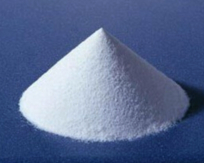

4.FAQ of Pvc Impact Modifier
1.PVC Impact Modifier is Mainly used for producing PVC profiles, U-PVC waterpipe & sewer pipe, cold curved pipe line, PVC blowing board and PVC extrusion board
2.Delivery date:30days
3.Proper for plastic pipe and profile stablizer
4.Payment:30% in advance,70% against BL copy
- Q:Will the catalyst change the reaction rate in the chemical reaction?
- Many of the catalysts are specific in varying degrees, and when added to the chemical reaction system that it can catalyze, it must change the rate of chemical reaction, and of course both positively and negatively catalyzed. Chemical reaction rate, it can not be called a catalyst.
- Q:Have you Read it ? If SoCan You Think Of Any Good Group Discussion Questions ?
- yea is an extremely solid e book yet very tragic. there have been no longer any sesquipedalian words( clever and long ) and you are able to desire to get words u mite no longer understand wid counsel from contxt clues. have enjoyable!!
- Q:how could scientists know the exact catalyst for every reactions??? THANX sooo much
- Believe me, nema, there's no way that we chemists know the best catalyst for every reaction. That would be simply impossible. However, from the type of reaction, the reactants, products, reaction conditions, solvents, etc. and from one's experience and the literature (papers and patents) one can get a good idea for most reactions of the type of catalyst that has worked for similar systems. One then starts off with a catalyst from the literature and modifies or changes it if improvement is needed based on chemical principles that one learns. There are also some theoretical calculations that can be made. Sometimes they work and sometimes they don't :) If it is an industrially important process like the Haber process for making ammonia from nitrogen gas and hydrogen gas, there may be thousands of catalysts which have been tried and evaluated. New minor improvements are being made every day. When a company does find a very good catalyst for an important reaction, often they keep it a trade secret. The good catalyst can make a huge difference in how commercially successful a particular process is. That's a large part of what chemical engineers do. You may never know if you have the best catalyst. The most you can hope for is one that is good enough. So it's a few parts personal knowledge, a few parts literature, a couple of parts theory, a lot of experimentation and often, more than not, a little luck. :)
- Q:Does a catalyst work for both reactants and products?From my understanding, organic catalyst or enzyme does not necessarily work for the product of the reaction because of the shape of the activation site. However I cannot speak for inorganic ones.
- A catalyst works for either the reactants or the product in a given reaction. If it works for the reactants then the activation site on the enzyme, for example, will only fit on the reactants. If a catalyst is added to a reaction in which it catalyzes the back-reaction, or it aids the products, then the reaction will be reversed. i don't think a catalyst could work for both the reactants and products in one reaction because it wouldn't really be a catalyst anymore; it wouldn't make the rxn progress any faster since it would be canceling out itself by aiding both the reactants and the products. I think this is what you are asking, if not please post more details. I hope I didn't confuse you even more!
- Q:Word editor when playing chemical equation = with the above conditions or how to adjust the size of the catalyst, how to make it centered,
- Open the word - insert - object - WPS3.0 formula - and then select the "label arrow template", you can add a catalyst.
- Q:The catalyst before and after the reaction of the quality and nature of the same, does it mean that a little catalyst can be all the substrate reaction? Such as: one gram of MnO2 can reflect the infinite H2O2?
- The quality of the catalyst before and after the reaction
- Q:Like biological and industrial reations. Thanks.
- Reactions that have high Activation Energy need catalysts to speed up reactions. These reactions aren't spontaneous since the reactants do not have enough energy to overcome the activation energy barrier. Catalysts are compounds that speed up reactions by providing an alternative pathway for the reaction. It is a common misconception that catalysts lower the activation energy. It doesn't actually lower the activation energy, instead it provides an alternative pathway with lower activation energy. For example, breakdown of hydrogen peroxide happens in nature but, relatively slowly. When you add a little bit of manganese dioxide, the breakdown happens a lot faster. Another example is, breakdown of glucose in the body. It is facilitated by an enzyme called amylase (or carbohydrase). An industrial example is the use of vanadium pentoxide (V2O5) in the Contact process, where SO2 is converted to SO3 in the presence of V2O5. Hope that helps!
- Q:Carbon dioxide and hydrogen in the catalyst and heating conditions, the reaction of water and methane, the chemical equation is what
- CO2 + 4H2 = catalyst, heating = 2H2O + CH4
- Q:Horseradish enzyme catalyzed Luminol chemiluminescence reaction
- Disinfectant ah ~ bleach ah ~ ~ take this kind of thing to wash the blood once something can interfere with Lumino identification. So that want to do bad things must be a good plan. Lumino in the presence of copper, copper alloy, horseradish or some bleach in the presence of fluorescence. So if the scene of the crime was bleached
- Q:how do catalysts help in green chemistry?
- Catalysts reduce the energy barrier for reactions, meaning they require less energy to make the forward reaction go. This means less heat, light, or other energy sources are required to perform the same reaction without a catalyst. Also, by definition, a catalyst is not consumed in a reaction and can therefore be recycled many many times before replacement is necessary.
1. Manufacturer Overview |
|
|---|---|
| Location | |
| Year Established | |
| Annual Output Value | |
| Main Markets | |
| Company Certifications | |
2. Manufacturer Certificates |
|
|---|---|
| a) Certification Name | |
| Range | |
| Reference | |
| Validity Period | |
3. Manufacturer Capability |
|
|---|---|
| a)Trade Capacity | |
| Nearest Port | |
| Export Percentage | |
| No.of Employees in Trade Department | |
| Language Spoken: | |
| b)Factory Information | |
| Factory Size: | |
| No. of Production Lines | |
| Contract Manufacturing | |
| Product Price Range | |
Send your message to us
PVC Stabalizer for Plastic Products,Profiles,Pipes,Tubes
- Loading Port:
- Qingdao
- Payment Terms:
- TT or LC
- Min Order Qty:
- 2000 kg
- Supply Capability:
- 100000 kg/month
OKorder Service Pledge
OKorder Financial Service
Similar products
New products
Hot products
Related keywords
